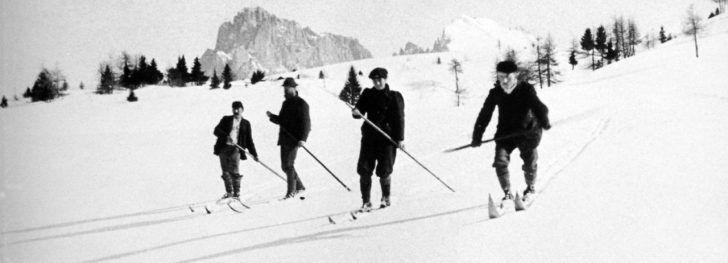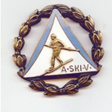A Personal Experience As Told To Alan K. Engen.

The late Ruth Rogers Altmann, a good friend and longtime Alta skier, was born in Vienna in 1917. She learned to ski in the Austrian Alps. Ruth’s earliest ski lessons involved the transition from Mathias Zdarsky’s (1874-1946) turning technique using one ski pole and leaning into the mountain to Hannes Schneider’s (1890-1955) turning technique using two ski poles and leaning away from the mountain.
Zdarsky transformed cross-country skiing to downhill skiing during the late 1800s and the early 1900s. He is recognized as the father of alpine (downhill) ski technique.

In the early ’20s, Ruth learned to ski in Zdarsky’s Ski School using a single, 5′ to 6′ metal-tipped bamboo pole for balance, turns, and to stop. With this technique, Zdarsky could teach people to ski in about five days.
The following excerpts are from Ruth’s recollections, which I recorded in 1988:
“The one long pole generally was made of bamboo and had a sharp metal point at the bottom. It was light and slightly flexible. Its purpose was to balance and support the skier. It was supporting when climbing up hill. One leaned on it with each step. When trails were too narrow for stemming or wedeln turns, we placed the pole between our legs and sat on it lightly, using it as a brake.”
“As skiing became more popular and developed from a means of transportation to a sport, games and racing competitions came into being. The popular game was a fox hunt on skis. A group of people had to find and catch the human fox’s red zipfel mūtze [long red night cap with a pom-pom]. The fox had an earlier start than the hunters so he could hide and flee from the hunters. ”
“As speed control became a factor in this new sport, the Zdarsky technique was challenged by Hannes Schneider’s speedier technique, which developed according to the law of physics and gravity. The weight had to be changed to lean downhill in turns, and two shorter poles, with baskets, replaced the one pole.
“We, the younger generation, and our older teenage brothers and sisters went with the new. A new division (of the ski school) was formed for two-pole skiing. Even some of the elders would use two poles, which when needed could be batted together to form one pole.”
Ruth Rogers Altmann skied every year at Alta well into her 90s and was a member of the “Wild Old Bunch,” Alta’s ski ambassadors. She passed away in the fall of 2015 at age 98 in New York City, where she lived most of her adult life.

Several years ago, she presented me with the instructor pin she received in the 1920’s by the Austrian Ski School. That pin on permanent display in the Joe Quinney Winter Sports Center/Alf Engen Ski Museum, at Utah Olympic Park, shows a skier with a single pole.











